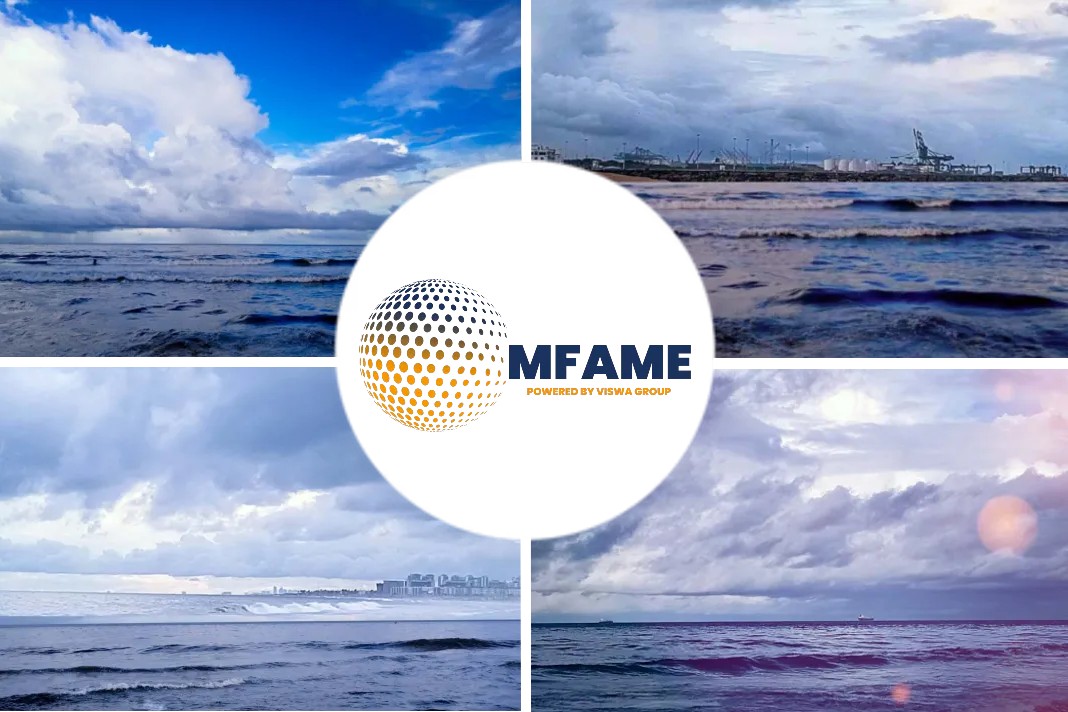
Voyaging on turbulent waters far from home, early sailors ventured in fear of legendary sea monsters – monsters created to explain what was unknown, and which came to life through the many vivid stories that were shared on ship and shore, reports an article published on their website.
Debunking the mythical beasts of maritime digital transformation
In producing our report, we confirmed that two of these monsters that exist in the maritime psyche today pose urgent challenges that will see organisations either fail, survive, or thrive in the new digital era. We’ve named them the Kraken of digitalisation and the Selma of decarbonisation.
The Kraken of digitalisation thrives on confusion and division, menacing organisations as they navigate their digital transformation journey. Meanwhile, the Selma of decarbonisation continues to threaten the environment, all while the industry struggles to meet sustainability targets.
Maritime professionals value the benefits new technologies provide, with our survey showing three-quarters acknowledge the importance of adopting new maritime platforms – vital in the fight against climate change – to be successful.
However, they also have divergent understandings of what this means in practice.
To combat the Kraken and Selma, the industry must collaborate to actualise a maritime ecosystem that’s connected from ship to shore. One that delivers improved efficiencies, better safety and compliance, and greater sustainability for all.
The Kraken of digitalisation: creating doubts around maritime technology
The Kraken of digitalisation is a mythical beast afflicting maritime professionals with doubts around the benefits of newer technologies. This comes despite widespread recognition that digital transformation is crucial to providing better services.
78% of maritime professionals agree that change and technological innovation is a good thing. This is largely due to perceptions around better adherence to industry-wide regulations, carbon-neutral shipping, increased safety, and greater efficiency.
That said, there are still widespread concerns around the time and money digitalisation requires, whether seafarers have the skills to use newer technologies, and if it’s even possible to retrofit existing infrastructures with digital tools.
Felling the Kraken through maritime innovation
To combat the Kraken, industry professionals need to dispel the confusion it creates around digital adoption. This requires a clear vision on what new technologies mean for seafarers in practice.
Wärtsilä has developed an array of solutions to realise this, consisting of a full suite of cloud-enabled platforms to streamline operations and reduce hardware-related costs.
This begins with integrated weather routing optimisation technologies, available onboard and onshore, to streamline route planning, account for weather patterns, and more.
After setting sail, crews can utilise smart monitoring systems collecting data on the ship’s performance to analyse a vessel’s route from multiple angles for fuel savings and reduced emissions.
These are featured alongside sensors working in-tandem with AI to support greater manoeuvrability and collision avoidance.
Vessels can also benefit from more efficient ship-to-shore communication by connecting their navigational systems to ports to automate just-in-time arrivals, while providing the data needed for vessels to adjust their trajectory or speed to the berth allocation.
The Selma of decarbonisation: blocking the path to sustainability
Maritime organisations face increased regulations around decarbonising. Given the industry’s share in global CO2 emissions, the International Maritime Organization committed to cutting the sector’s footprint in half by 2050.
However, decarbonisation targets aren’t being met by the industry, with new regulations making a limited impact. Currently, the maritime industry still produces roughly 2-3% of global emissions.
Our maritime professionals surveyed recognise the seriousness of climate issues, with 8 in 10 acknowledging the crucial role digital technology will play in reducing emissions by 2050.
That said, they also face challenges in the here and now, which explains why 37% of respondents confirmed they do the minimum to remain compliant.
Slaying the Selma through sustainable shipping
Alongside climate-related challenges, the industry faces other concerns including supply and demand imbalances, equipment and crew shortages, cybersecurity, and rising costs. Emerging technologies hold the potential to assist with maritime sustainability. Wärtsilä has developed accurate data modelling and analytics capabilities to help crews identify opportunities for fuel and operational decisions that optimise journey times and reduce overall emissions.
We’ve also developed a new generation of hardware and ship components allowing vessels to operate sustainably, including fuel efficient engines, ship electrification solutions and propulsion energy saving technology.
Ultimately, targets and regulations won’t be enough to ensure the industry makes the efforts needed to reach net zero by 2050. Instead, the industry needs to take practical steps by adopting the technologies that will allow them to meet these goals.
Arm yourself with the right technology
Maritime organisations are all in the same boat, facing a wide range of challenges which can be met through the right technologies and collaborative efforts.
However, realising the correct infrastructures means the industry needs to work together. Organisations need to be open to collaboration, as successful digitalisation is never achieved by any one player.
Wärtsilä stands ready as the global leader in innovative technologies and lifecycle solutions for the marine industry.
By connecting the dots across the maritime ecosystem, we promise to propel our users forward into positive change, through market-leading technologies to aid in achieving business success.
While formidable in their own right, the Kraken and Selma are just two of the beasts that the maritime industry needs to face.
Did you subscribe to our daily Newsletter?
It’s Free! Click here to Subscribe
Source: Wärtsilä


















